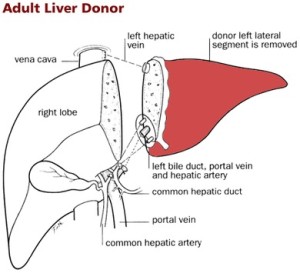Lou Reed’s “Walk on the Wild Side” is Over
Legendary rock musician Lou Reed has died.
The songwriter, vocalist and guitarist for the Velvet Underground in the 60s, followed by decades as a solo artist, had an influence which shaped rock and roll. Reed died over the weekend from complications of a liver transplant at the age of 71 years old. He had received the transplant in May 2013. At that time, his wife performance artist Laurie Anderson, told the Times of London that:
It’s as serious as it gets. He was dying. You don’t get it for fun.
The reason for the liver transplant, and the exact complication that caused his death have not been revealed.
A flood of celebrity Twitter messages followed the news of his passing:
“The news I feared the most, pales in comparison to the lump in my throat and the hollow in my stomach. Two kids have a chance meeting and 47 years later we fight and love the same way — losing either one is incomprehensible. No replacement value, no digital or virtual fill … broken now, for all time. Unlike so many with similar stories - we have the best of our fury laid out on vinyl, for the world to catch a glimpse. The laughs we shared just a few weeks ago, will forever remind me of all that was good between us.” — Former Velvet Underground bandmate John Cale.
“New York lost one of our greatest gifts today.” —Def Jam co-founder Russell Simmons.
“RIP Lou Reed. Thank you for your beautiful/dark lyrics/music and stance on life. You inspired me from my teenage years right up till today.” — Nikki Sixx of Motley Crue.
“R.I.P Lou Reed - VU was a big influence when weezer was being formed.” — Weezer’s official Twitter page.
“I met Lou Reed and told him he gave me tinnitus at a concert in 1989 that never went away and it was worth it. Dirty Blvd. Love to Lou.” — Filmmaker Judd Apatow.
A Dozen Things You Should Know About Liver Transplantation
1. Liver transplantation is surgery to remove a diseased or injured liver and replace it with a healthy whole liver or a segment of a liver from another person, called a donor. A successful liver transplant is a life-saving treatment for people with liver failure, a condition in which the liver no longer works as it should.
 2. Cirrhosis is scarring of the liver. Scar tissue forms because of injury or long-term disease. Scar tissue cannot do what healthy liver tissue does - make protein, help fight infections, clean the blood, help digest food and store energy.
2. Cirrhosis is scarring of the liver. Scar tissue forms because of injury or long-term disease. Scar tissue cannot do what healthy liver tissue does - make protein, help fight infections, clean the blood, help digest food and store energy.
3. In U.S. adults, the most common reason for needing a liver transplant is cirrhosis caused by chronic hepatitis C, followed by cirrhosis caused by long-term alcohol abuse.
4. The process for getting a liver transplant begins with referral to a transplant center, where a transplant team carefully evaluates candidates to determine whether they are suitable candidates for transplantation. The transplant center’s liver transplant selection committee decides whether to register a candidate on the national waiting list for a transplant.
5. The national waiting list is maintained by the United Network for Organ Sharing (UNOS), which administers the U.S. Organ Procurement and Transplantation Network (OPTN) under contract with the Health Resources and Services Administration (HRSA) of the U.S. Department of Health and Human Services.
6. When people are registered on the waiting list, they are assigned a score that indicates how urgently they need a transplant. The two scoring systems are the Model for Endstage Liver Disease (MELD) scoring system, used for people age 12
7. Most donated livers come from deceased donors—donors who have recently died. Adults usually receive the entire liver from a deceased donor, although a segment of the liver can be transplanted when the donor liver is too large.
8. Occasionally, an adult liver is split into two portions and given to two different recipients.
 9. A small number of liver transplants are performed using living donors. Most living donors are relatives of the recipient. In living donor transplantation, a segment of the donor’s healthy liver is surgically removed and transplanted into the recipient. Because a healthy liver can regenerate, the donor’s liver soon grows back to normal size after the surgery, while the segment of the liver that was transplanted into the recipient also grows to normal size.
9. A small number of liver transplants are performed using living donors. Most living donors are relatives of the recipient. In living donor transplantation, a segment of the donor’s healthy liver is surgically removed and transplanted into the recipient. Because a healthy liver can regenerate, the donor’s liver soon grows back to normal size after the surgery, while the segment of the liver that was transplanted into the recipient also grows to normal size.
10. Complications after liver transplant surgery may include bleeding, bile leaks, blood clots in the liver’s blood vessels, infection, rejection of the new liver, and side effects from immunosuppressive medications. Liver transplant recipients must take immunosuppressive medications for the rest of their life.
11. Liver diseases can recur in transplanted livers. The transplanted liver can be damaged if, for example, a person who had cirrhosis caused by long-term alcohol abuse resumes drinking after the transplant. Recurrence of certain liver diseases such as hepatitis C can also damage the transplanted liver.
12. Most liver transplants are successful. About 80 to 85 percent of transplanted livers are functioning after 1 year. People who have a liver transplant are usually able to return to normal activities after recovering for several months.
For more information, click here to go to the Resounding Health Casebook on the topic.



























0 comments